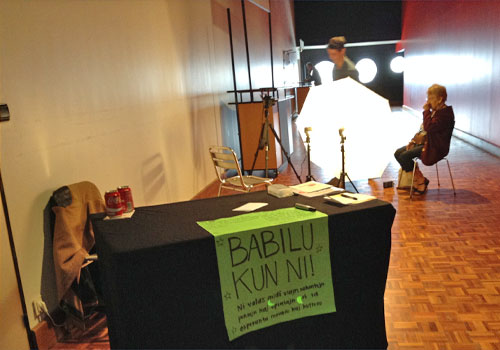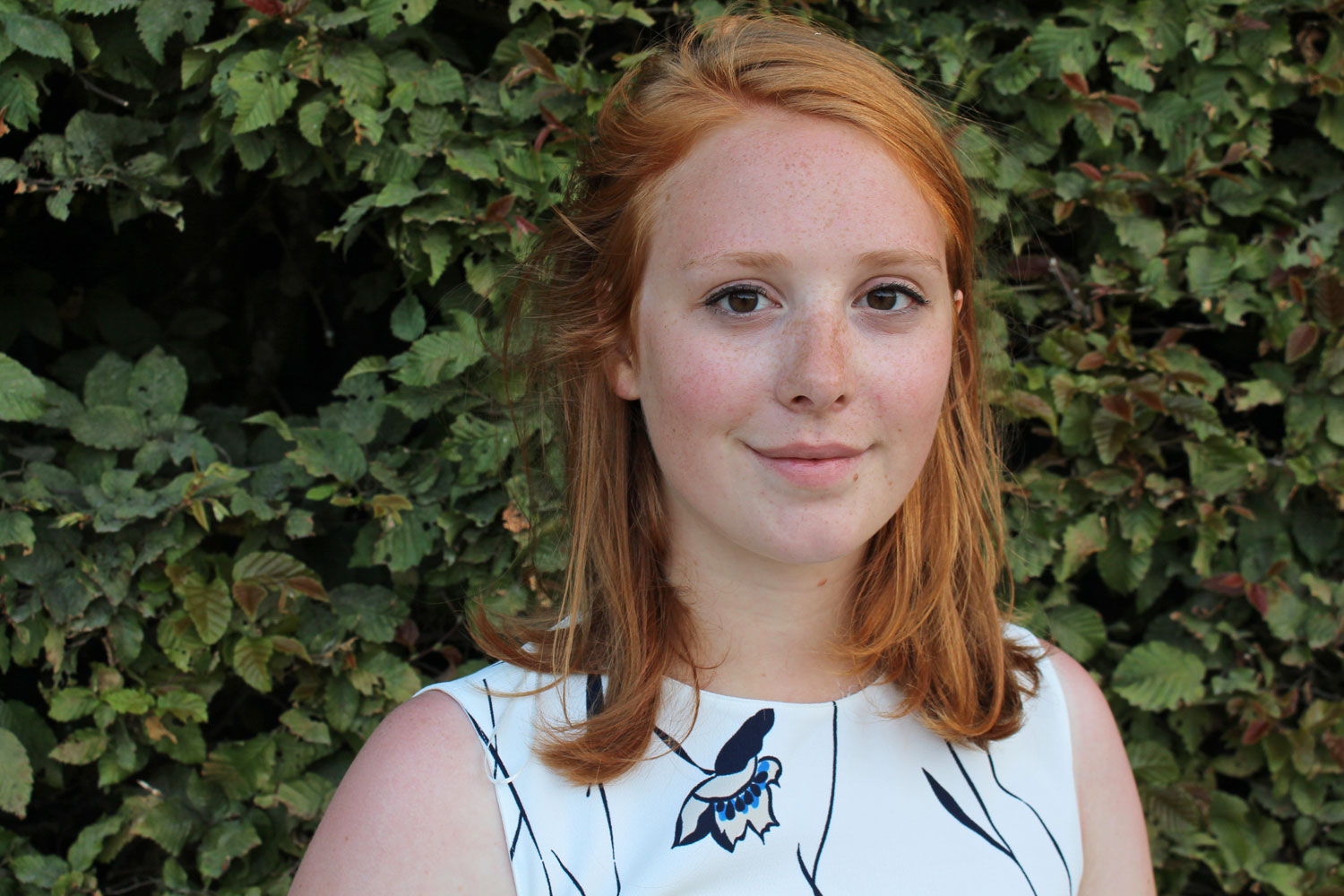Growing up in Oxford, Connecticut, Kasia Thomas visited her grandmother in Bialystok, Poland every summer with her mother and sister. During her visits, Thomas noticed the name Ludwik Zamenhof appeared all around the city.
“There’s a square named after the creator, a street name and a children’s hospital named after him,” Thomas says. “So it was always something that I was curious about.”
Thomas looked him up online, and found that Zamenhof created the invented language Esperanto in the 1880s, as a new way to bridge the language gap between individuals. Esperanto is a neutral international language, says Thomas, which means there is no one country where everyone speaks it.
It is not meant to replace a language, but rather complement a speaker’s native tongue, says Thomas.
“A Chinese person still speaks Chinese and a Polish person still speaks Polish, but because they both know Esperanto they can both communicate with each other,” Thomas says.
Currently a senior at UConn majoring in molecular and cell biology with an art history minor, Thomas was awarded a UConn IDEA grant in January 2015 to explore the Esperanto language in depth. She wanted to understand the lives of its modern-day users through a documentary film.

“The purpose of our project is to document what it is like to be an Esperanto speaker in this day and age,” Thomas says. “We wanted to document the contemporary culture because there isn’t that much research on the actual people who speak the language.”
Despite her scientific background, Thomas says she’s someone who has many different interests, so she decided to put her creative side to use.
“I wanted to have the opportunity to explore something outside of my major because the rest of my life is going to be molecular and cell biology,” Thomas says. “It’s important to be a well-rounded student and learn about all different types of things.”
Thomas and her IDEA project partner Eddy Anderson ’17 (ENG) began by scoping out interview prospects online. To find Esperanto speakers, called Esperantists, they went to social media platforms, like Facebook and Reddit, which are the primary methods Esperantists use to communicate, learn and share with one another.
Thomas was surprised at how happy, accepting and welcoming they were.
“They really focus on creating a sense of community, almost a brotherhood among Esperantists,” Thomas says.
Anderson was the face of the documentary, and attended an intensive immersion course to become fluent in Esperanto. Thomas took care of the details like logistics, finances, setting up interviews and filming. Thomas felt confident in her ability to precisely execute the project, and says her scientific background – even learning the ins and outs of cellular structures – helped with the project.
“When you study molecular and cell biology, not only do you have to look at the big picture, but you also focus on the details,” she says. “I think the fact that I’m very detail oriented, which has definitely been cultivated by my studies in molecular and cell biology, really helped with executing the project.”
Thomas and Anderson spent six weeks in Europe in June and Jul 2015, meeting with people from China, Argentina and West Africa, as well as Europeans. Thomas says their interviews would not have been possible without knowing Esperanto.
“When we went in we didn’t think people would be as interested as they were in speaking to us, because you know with film anything you say is going to be put out there,” Thomas said. “But people were really responsive and we actually ended up turning people away for interviews because we didn’t have enough time.”
The two also visited Bialystok and Lille, France for the World Congress of Esperanto convention. This fall the partners also attended an Esperanto conference in Lake George, New York to conduct their final interviews.
Recently, the partners presented their research at the UConn Fall Frontiers poster session, an event to highlight undergraduate research. Their results showed that found that on average, it takes a person six months to master the language – but Thomas says she met some people who mastered the language in six weeks. The poster received much more attention than Thomas anticipated.
“Frontiers was as a good way to learn how to present a poster, because part of being a scientist is presenting your research,” Thomas said.
During her experience abroad, Thomas sometimes traveled alone and adapted to being in countries where she knew a limited amount of the language. Being able to experience countries on her own has opened her up more, Thomas said.
“I learned how to be independent because it’s a whole other ball game to have such a large project to execute in a small time frame in a country where you can only speak a little bit of the language,” she says. “I feel more confident in myself afterward.”
Now Thomas and Anderson are in the editing stages, and will release a trailer of the documentary on Dec. 15: Zamenhof’s birthday, and a day celebrated in the Esperanto community. The full documentary will be released in February and Thomas hopes to hold a release party at UConn.
For anyone interested in learning Esperanto, Thomas says: just do it.
“The best advice I could give someone who is interested in learning it is: learn it because it’s so easy, and seek out other people who learn it,” she says. “After meeting all these people who speak Esperanto, they are probably the friendliest, most welcoming and accepting people that we have ever met.”



